Downtown Recovery Trends November 2020
THE THIRD WAVE OF THE PANDEMIC is spreading faster than ever in most states, and restaurants and bars are again being shuttered. Those who survived the summer though, have learned to be tough and are largely surviving.
RESTAURANTS
Takeout and delivery were at an all-time high this summer and, as we head into mid-autumn, that trend has skyrocketed: Searches for takeout and delivery have doubled! In particular, bundles with family-friendly fare are wildly out-performing. While customers still expect customization, they’re also appreciating the ability to buy a package deal. When people are stressed, removing choices is an attractive proposition.
QR codes have become ubiquitous sights at many restaurants who are looking to minimize physical contact between guests and servers. Restaurants that aren’t currently also using the QR code to collect emails, feedback, and reviews should add those immediately. The largest opportunity that restaurants are missing out on the rich data available to them using QR codes. Never before have guests been so willing to hand over personal information. Just as online retailers use orders to customize their marketing, restaurants need to learn as well. Simple segmenting can also help: lunch, dinner, family, alcohol, etc. make it easy to craft relevant messages.
Restaurants that have lines built up in waiting areas or where guests have their temperature checked are rethinking the host stand. Not only is it critical for safety reasons to have someone prevent close contact, but it can be a pleasant experience that sets the tone for the meal. Complimentary beverages, plants, music, shade/heaters, blankets, and distanced seating set the stage for a pleasant meal, keep guests and staff safe, and are a wonderful opportunity to upsell alcohol and dessert.
COVID RESOURCES
Updates on COVID are largely ignored on BID’s websites, but roundups that mix businesses with attractions are performing significantly better than last year. You can use analytics to decide what your audience is interested in… or you can just ask them. Make a habit of using social media to engage your audience and ask them what questions they have or what they’re looking for, then reply with a longer post later in the week. People are eager to communicate right now and everyone loves to feel heard.
WARM UP
Temperatures are dropping and people aren’t as eager to go outside. It’s not just a public health hazard: it also affects businesses with outdoor seating. We’re seeing branded blankets everywhere. It’s a costly investment, but organizing an order for your merchants can keep costs manageable. Better lighting public lighting and music can also help people feel warmer.
BLACK FRIDAYS
Retailers are counting on ecommerce, but they’ll still need to get creative with their in-store experience. Many retailers are reaching out to their customers to offer “reservations” for busy shopping days, either complimentary or by including the offer with gift cards. This strategy can work especially well when coordinated with restaurants; BIDS are well-positioned to help coordinate. Because retailers know exactly how many people to expect, they can manage labor costs and even offer extended hours without breaking the bank. Experiences are also easier when shops are reserved. Whether that means inviting people to watch as products are made, taking the time to wrap gifts, sharing stories, making personal shoppers available, upselling gift cards, or even just putting out a plate of cookies, a managed stream of shoppers makes experiences extra special.





